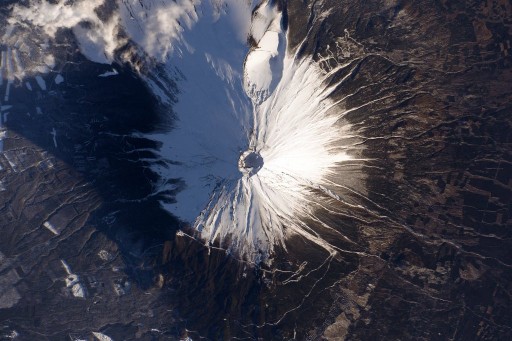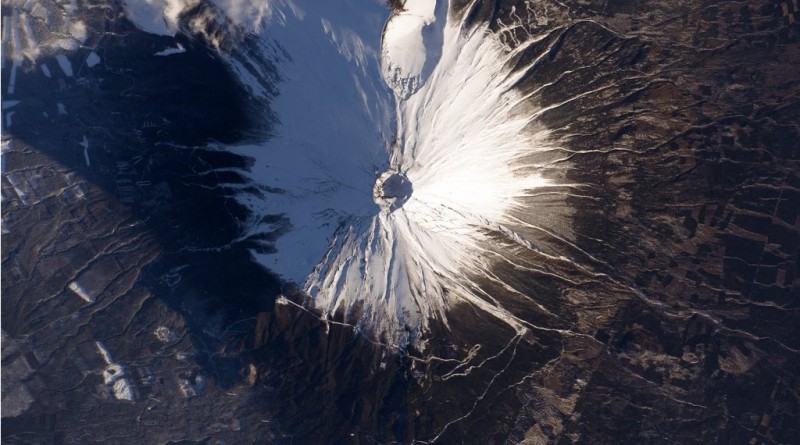ISS Operations Update – February 8, 2016

Experiments:
Electrostatic Levitation Furnace – Troubleshooting of accessibility issue that has prevented the connection of an ELF hose to the Moderate Temperature Loop for cooling. The ELF was connected to the MTL through a jumper between MTL and MSPR2. [The Electrostatic Levitation Furnace will provide ISS with its second Materials Science facility operating on the basis of electrostatic levitation, alongside the Electromagnetic Levitator that is active aboard the Columbus laboratory, studying fundamental principles of metallurgy. Heating and melting samples of metal alloys or other materials in a zero-G environment followed by the solidification of the sample yields a very pure material without any contaminations. The study of the solidification process and the finished product can provide valuable knowledge concerning the properties of the material that could improve production techniques on Earth for better material properties in alloys, glass and ceramics.]
Burning and Suppression of Solids – Milliken (BASS-M) [BASS-M stands for Burning and Suppression of Solids – Milliken and is part of a series of BASS experiments that investigate how solid materials burn without the presence of gravity which is of use in physics but also in spacecraft engineering and fire protection. The BASS-M experiment looks at flame-retardant cotton fabrics to determine how well they resist burning in microgravity. This can be used in the development of flame-retardant textiles for use on Earth and in space.]
Ocular Health – Tonometry & Vision Checks, Blood Pressure MEasurements [OH is a human physiology study. Its full name is Prospective Observational Study of Ocular Health in ISS Crews. “The Prospective Observational Study of Ocular Health in ISS Crews (Ocular Health) protocol aims to systematically gather physiological data to characterize the Risk of Microgravity-Induced Visual Impairment/Intracranial Pressure on crewmembers assigned to a 6 month ISS increment,” the NASA experiment overview said. It is known that some (not all) astronauts in orbit experience changes in visual acuity (visual clarity) and intraocular pressure as a result of fluid shifts within the body as it is subjected to microgravity. About 20% is astronauts flying to ISS have reported these kinds of changes. Test subjects will undergo pre-flight, flight and post-flight testing of their eyes using a variety of techniques.]
Multi-Omics Sampling [Multi-Omics studies the effect of the space environment and prebiotics on astronauts’ immune function.]
Sleep ISS-12 [The ISS-12 experiment monitors the ambient light exposure and crew member activity and collects data on the subjective evaluation of sleep and alertness. Ambient light and activity are monitored via a wrist-worn actiwatch that delivers actiwatch spectrums that are put through bio-mathematical models of sleep and light to predict circadian phase. Sleep logs will be kept by crew members as a subjective assessment of sleep quality and duration. It is hoped that this investigation can deliver requirements for lighting, sleep-shifting protocols and workloads for future space exploration missions.]
Pilot-T [This experiment puts crew members through complex tasks, such as piloting a space vehicle, at various stages of a long-duration mission to assess crew member performance reliability over long mission durations.]
VEG-01 Investigation – Water Sample Collection. [VEGGIE or Veg-01 is a deployable plant growth unit to be set up on the Space Station to demonstrate the feasibility of a space garden. The experiment facility provides lighting and nutrient supply and is capable of supporting a variety of plant species that can be cultivated for educational outreach, fresh food and even recreation for crewmembers on long-duration missions. Thermal control is provided from ISS in-cabin systems and the carbon dioxide source is the ambient air aboard ISS.]
Habitability [Assessment of International Space Station Vehicle Habitability will see teams on the ground study video of the behavior of crew members within the habitable environment of ISS while the crew fills out questionnaires and collects video of areas of interest in order to provide an assessment of the habitability of ISS in its current state for a one-year mission. Results will be used to develop spacecraft with improved habitability properties to allow crew members to optimally utilize the onboard space.]
Interactions Experiment [‘Vzaimodeistviye’ (Interactions) looks at psychological aspects of long duration space flight during which different cultures come together aboard a Spacecraft such as ISS and seeks to improve crew interactions aboard ISS and with teams on the ground.]
Journals [Electronic journals will be kept by the crew members to allow psychologists to study behavioral issues that are associated with the isolation and confinement over long-duration space missions. Journals from 6-month ISS mission have amounted to a total of 1,100 written pages, but no data beyond those six months is available making this an interesting opportunity to study the impact of isolation in the confinements of ISS over a longer period.]
Maintenance/Systems:
Nominal Inspections/Servicing Tasks (Morning Inspection, Caution & Warning Panel Check, Sozh System Maintenance) (Russian Crew)
Mouse Habitat Unit (MHU) – Camcorder Connection
Other Activities:
Cygnus OA-4 Cargo Operations
Extravehicular Mobility Unit #3003 Installation in Airlock for upcoming Maintenance
Crew Medical Officer Proficiency Training [CMO skills are reviewed and trained at various points in the mission to keep up proficiency and ensure proper responses in critical health situations on board.]
Robotics: The Special Purpose Dexterous Manipulator (SPDM) over the weekend finished a three-day demonstration of the transfer of battery style Orbital Replacement Units (ORUs) prior to the deliver of new batteries to ISS as external cargo on the HTV-6 mission. This demonstration is hoped to show that SPDM can handle the batteries and cut the need for installation spacewalks. The SPDM operation will be the robot picking up a spare MBSU Flight Releasable Attachment Mechanism (FRAM) from Express Logistics Carrier (ELC)-2 to the Enhanced ORU Temporary Platform (EOTP) on SPDM. The second part of the demonstration of the Right-hand Off-Set Tool (ROST) to unfasten the secondary attachment bolt of the MBSU.

